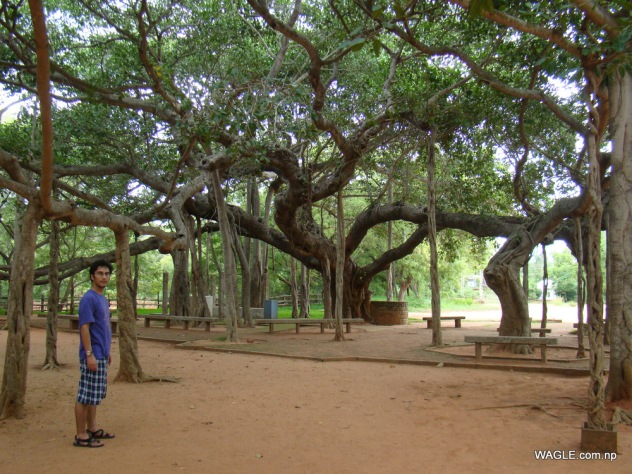
I always thought बर (Banyan) was the husband of पीपल (Peepal). It’s not because the word बर also means husband in Nepali :). It’s probably because I have always seen these trees together on चौतारीहरु (chautaris) in villages- mostly on the opposing sides of a chautari. On certain days people go to chautaris or whereever Banyan and Peepal are and “marry” them. They garland both trees- single garland- amidst a ceremony. This should explain the significance that Banyan (बर) along with Peepal holds in Nepali society. Peepal is considered more religous and sacred than Banyan, I believe. Both of these trees are deeply rooted in our culture too. A lot of songs talk about them.
खोला वारी खोला पारी पीपल र बर
हावा चल्यो पात हल्यो माया वर वर
-मदनकृष्ण
[Thanks to my significant half who told me about the existence of this particular song.]

I remember hanging and swinging on the aerial prop roots of Banyan tree in my childhood. But I had never seen a Banyan tree with APR fully developed into woody trunks before I visited Auroville in Pondicherry last month. An hour ago I also knew that Banyan is the national tree of India. I was completely awed by the sight of this giant banyan tree near Matrimandir. All Indian tourists who were traveling with us and other Westerners we saw at Matrimandir completely ignored the tree and kept walking ahead. We branded them fools for not stopping by the tree and admiring its shape, size and beauty.
Pics by cotraveler












You must be logged in to post a comment.